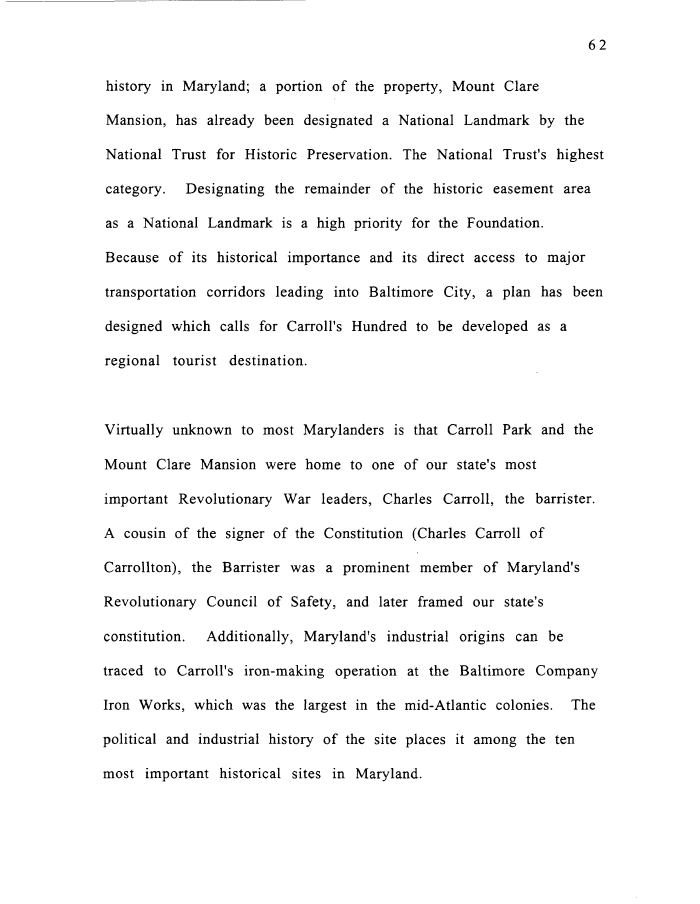 |
||||
|
TASK FORCE TO STUDY THE HISTORY AND LEGACY OF SLAVERY IN MARYLAND (Final Report) 1999/12/31 MdHR 991422 MdHR 991422, Image No: 71 Print image (40K) |
 |
||||
|
TASK FORCE TO STUDY THE HISTORY AND LEGACY OF SLAVERY IN MARYLAND (Final Report) 1999/12/31 MdHR 991422 MdHR 991422, Image No: 71 Print image (40K) |
| 62 history in Maryland; a portion of the property, Mount Clare Mansion, has already been designated a National Landmark by the National Trust for Historic Preservation. The National Trust's highest category. Designating the remainder of the historic easement area as a National Landmark is a high priority for the Foundation. Because of its historical importance and its direct access to major transportation corridors leading into Baltimore City, a plan has been designed which calls for Carroll's Hundred to be developed as a regional tourist destination. Virtually unknown to most Marylanders is that Carroll Park and the Mount Clare Mansion were home to one of our state's most important Revolutionary War leaders, Charles Carroll, the barrister. A cousin of the signer of the Constitution (Charles Carroll of Carrollton), the Barrister was a prominent member of Maryland's Revolutionary Council of Safety, and later framed our state's constitution. Additionally, Maryland's industrial origins can be traced to Carroll's iron-making operation at the Baltimore Company Iron Works, which was the largest in the mid-Atlantic colonies. The political and industrial history of the site places it among the ten most important historical sites in Maryland. |